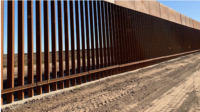The U.S. Government Accountability office wants federal agencies to better monitor contractor compliance with the use of E-Verify, a system used to confirm employee eligibility to work legally in the U.S.—noting in an Oct. 3 report that the federal Office of Management and Budget has not made that responsibility clear to agency officials.
GAO also wants contractors that misuse the system or have been rejected from its use to also face suspension and debarment proceedings. According to its report, more than 1 million U.S. employers, including 95,000 federal contractors, have enrolled in E-Verify.
GAO reviewed contractor compliance at three federal agencies responsible for nearly two-thirds of all new contract awards in 2021—the U.S. Defense Dept., U.S. Dept of Homeland Security (DHS) and U.S. Dept of Health and Human Services. Investigators found “inconsistent” monitoring efforts “OMB has not clearly communicated this expectation to agencies,” the report said, noting that officials were totally unaware of their compliance monitoring responsibility.
GAO also said Homeland Security has stopped providing other agencies a quarterly list of contractors using E-Verity, claiming “data accuracy” issues. “Without clear expectations and useful data, agencies may not be checking their contractors’ compliance,” the report said.
DHS also has stopped contractor terminations for non-use of E-Verify accounts, something it did previously, with GAO noting more than 5,000 such actions taken. But the department has kept pace in terminating contractors for E-Verify misuse, which GAO said involves issues that prevent confirmation of an employee’s work eligibility. DHS has terminated about 300 contractor accounts for E-Verify misuse. Those with terminated accounts are required to be referred for contracting suspension or debarment decisions, but DHS lacks a process to refer contractors for further review, according to GAO.
The federal watchdog recommended that OMB clarify federal agency responsibility for monitoring contractor compliance and that DHS implement a process to refer contractors with terminated accounts for appropriate action. GAO also recommended DHS determine government-wide problems in data accuracy and improve data collection on contractor E-Verify compliance to better support agency monitoring.
E-Verify can be an important tool to discourage illegal immigration but it must be tied to system data improvements, Peter Comstock, Associated Builders and Contractors senior director of legislative affairs, told ENR.
Federal contractors have been required to use E-Verify for more than a decade, Brian Turmail, vice president of public affairs and strategic initiatives at the Associated General Contractors, told ENR, with improved program accuracy and efficiency. Most federal contractors, and those working for state agencies with similar requirements, now use it as a routine part of the hiring process. “However, any expansion of E-Verify should be paired with other immigration reforms that acknowledge and address workforce shortages,” he said.
Sen. Mitt Romney (R-Utah) and Sen. Tom Cotton (R-Ark.) introduced a bill in August that to require all federal and private employers to use E-Verify to check employment eligibility. A similar bill was introduced in 2021. Romney said the new bill would eliminate a key driver of illegal immigration.
NumbersUSA, an advocacy group for tightened immigration policies, said 18 states have some form of E-Verify and seven make it mandatory for most businesses. “E-Verify is one of the most impactful things state legislatures can do to deter future illegal immigration,” said Chris Chmielenski, its director of state government relations.
Florida in July became the most recent state to mandate use of E-Verify. It requires private employers with 25 or more staff to use the system for new employees and includes a daily fine of $1,000 for non-compliance that can lead to suspension of business licenses. The Texas legislature declined to pass a similar requirement this year.





Post a comment to this article
Report Abusive Comment